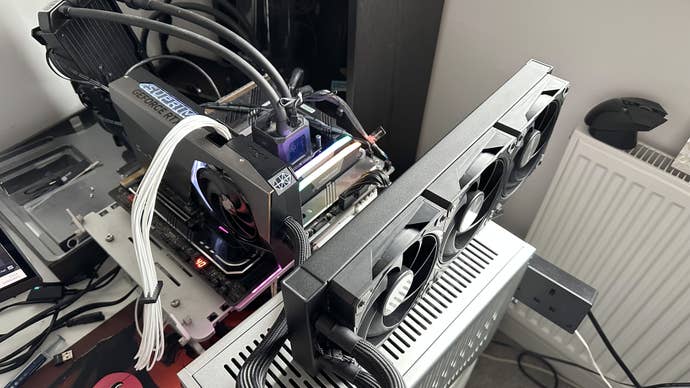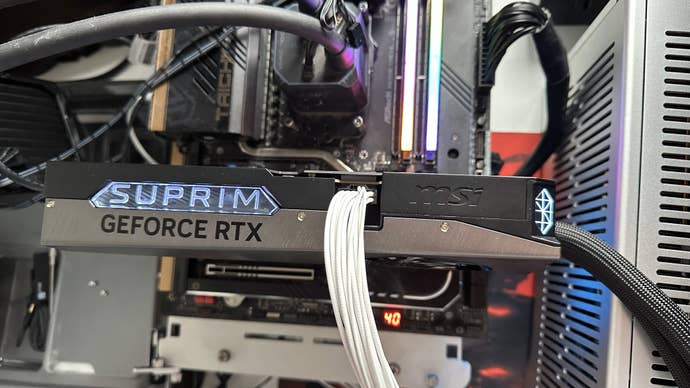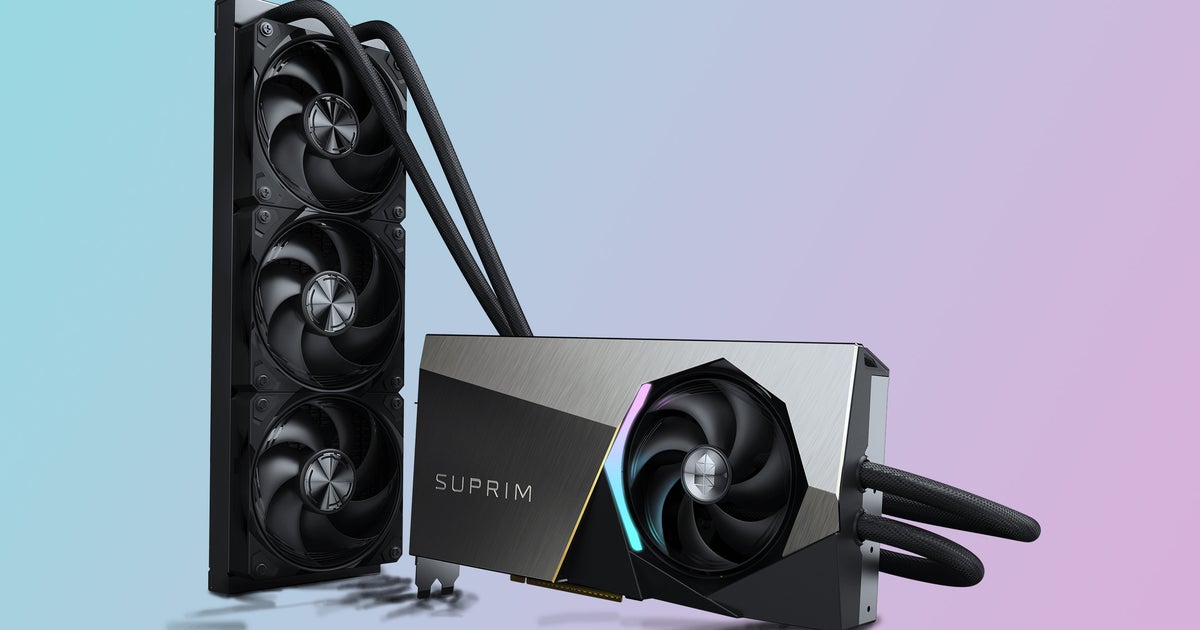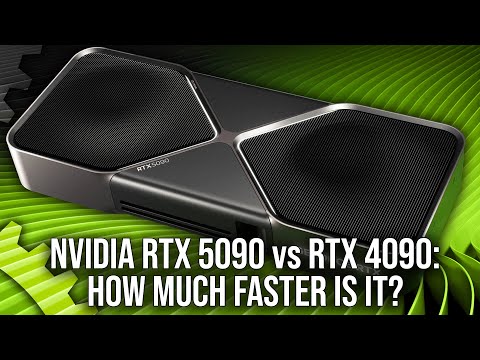Nvidia’s GeForce RTX 5090 is the undisputed most powerful consumer graphics card, but which 5090 is the best one? In terms of value, the answer is the cheapest one you can find – probably the Founders Edition at a steep $2000 – but what if you’re willing to spend even more and want absolutely top-tier performance?
In that lucky scenario, MSI puts forward the water-cooled RTX 5090 Suprim Liquid SOC. With a nominal price of $2500, it’s (at least) 25 percent above MSRP, so how much extra performance do you unlock out of the box with this ultra-premium offering? Are there are any additional benefits in terms of thermals, noise and overclocking potential? And what is it like building a PC with an extra 360mm radiator to deal with?
To find out, we’ve run the Suprim Liquid through a portion of our usual battery of gaming benchmarks, looking at RT and raster performance across a range of resolutions in the most demanding scenes from recent games. We’ve tested with the default “silent” profile and the higher-clocked “gaming” profile, and compared these results with that of the original 5090 Founders Edition. We’ve also got some overclocked results for comparison, featuring a small core clock boost and a more sizeable bump to memory bandwidth, on the penultimate page.
Before we get into the benchmark results, let’s cover off the physical design of the card itself and our performance expectations based on its specs.
Unlike the surprisingly compact Founders Edition card, the Suprim Liquid is a bit of a beast – though this is mostly down to the fact that it comes with a 360mm radiator permanently attached by two 450mm tubes. The GPU itself is a dual-slot design like the FE, making it relatively easy to install, but at 280x148x51mm it’s still sizeable – and of course having that 360mm radiator, measuring 394x121x55mm, means that pretty much all SFF cases won’t be sufficient. The card itself weighs just under 3.0kg, while the whole package is just under 4.3kg – quite substantial.
The Liquid Suprim uses 575W in silent mode and maxes out the 600W 12V-2×6 power cable in its gaming mode, with mode selection happening via a physical switch on the board. Power can be delivered directly via compatible ATX 3.0+ PSUs or connected to four 8-pin PCIe cables using the adapter provided. This isn’t angled as it is on the FE card to prevent undue strain on the cable, but the revised connector ought to prevent the charring we experienced on one RTX 4090 FE unit. As well as the usual HDMI 2.1 port, there are three DisplayPort 2.1b ports, allowing for compatible 4K 240Hz HDR displays to be connected without the need for DSC (display stream compression) or 4K 480Hz with DSC.


| Model | MSI 5090 LS | Nvidia 5090 FE | RTX 5080 | RTX 5070 Ti | RTX 5070 |
|---|---|---|---|---|---|
| GPU | GB202 | GB202 | GB203 | GB203 | GB205 |
| Cores | 21760 | 21760 | 10752 | 8960 | 6144 |
| Boost clock | 2.58GHz | 2.41GHz | 2.62GHz | 2.45GHz | 2.51GHz |
| Mem bandwidth | 1792GB/s | 1792GB/s | 960GB/s | 896GB/s | 672GB/s |
| TGP | 600W | 575W | 360W | 300W | 250W |
| Suggested PSU | 1000W | 1000W | 850W | 750W | 650W |
| Price | $2499/£2649 | $1999/£1939 | $999/£979 | $749/£729 | $549/£539 |
Looking at the specs, we’re looking at a maximum of a seven percent boost to core clocks with gaming mode enabled, or a still reasonable four percent in silent mode. No memory overclock is included here, but as mentioned earlier the gaming mode also bumps up power from 575W to the maximum 600W possible to deliver via the 16-pin connector. We’ll have a look at overclocking later in this piece.
For all of our results, we’re using a top-end system based around the fastest gaming CPU, the AMD Ryzen 7 9800X3D, to shift the burden to the graphics card as much as possible. We also have 32GB of Corsair Vengeance DDR5-6000 CL30 memory, a high-end ASRock X670E Taichi motherboard and a 1000W Corsair PSU.
With all that said, let’s get into the benchmarks.
MSI GeForce RTX 5090 Liquid Suprim Analysis
- Introduction [this page]
- RT benchmarks: Alan Wake 2, A Plague Tale: Requiem, Hitman: World of Assassination
- RT benchmarks: F1 24, Dying Light 2, Cyberpunk 2077
- Game benchmarks: Senua’s Saga: Hellblade 2, F1 24, Cyberpunk 2077
- Game benchmarks: Alan Wake 2, A Plague Tale: Requiem, Hitman: World of Assassination
- OC benchmarks: Dying Light 2, Cyberpunk 2077, Forza Horizon 5
- Conclusions, build notes and recommendations

